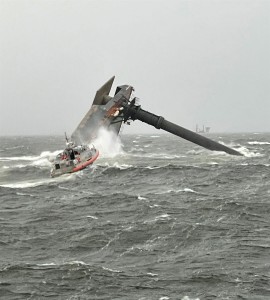(NEW ORLEANS) — A U.S. Coast Guard commander testified Monday that a technical problem with the service’s Navtex system prevented it from relaying severe thunderstorm and marine warnings during the period on April 13 when the liftboat SEACOR Power capsized off Port Fourchon, La., killing 13 of the 19 people aboard.
Cmdr. Vince Taylor said the issue involving Navtex, which transmits alerts under the Global Maritime Distress and Safety System, was discovered at 10 a.m., a few hours before the National Weather Service issued a series of warnings for the region, according to NOLA.com. But the Coast Guard never transmitted those warnings because of a “connectivity issue” with Verizon that wasn’t resolved until after SEACOR Power capsized, Taylor said.
The weather updates received by the vessel’s captain that morning called for 10- to 15-mph winds and seas of 2 to 4 feet as the 175-foot liftboat left Port Fourchon for a Telos Energy platform in the Gulf of Mexico. Philip Grigsby, a forecaster with the National Weather Service, testified at the Coast Guard hearing that the NWS had updated the forecast at 2:30 p.m., issuing a marine warning for winds to exceed 39 mph.
Personnel on the liftboat did not get the update because of the connectivity problem, which Taylor said was resolved at 4:23 p.m. — 42 minutes after SEACOR Power capsized. Winds as high as 80 mph hit the liftboat as it was trying to lower its legs to the sea floor for stability.
The Coast Guard hearings into the accident are scheduled to continue all week.

